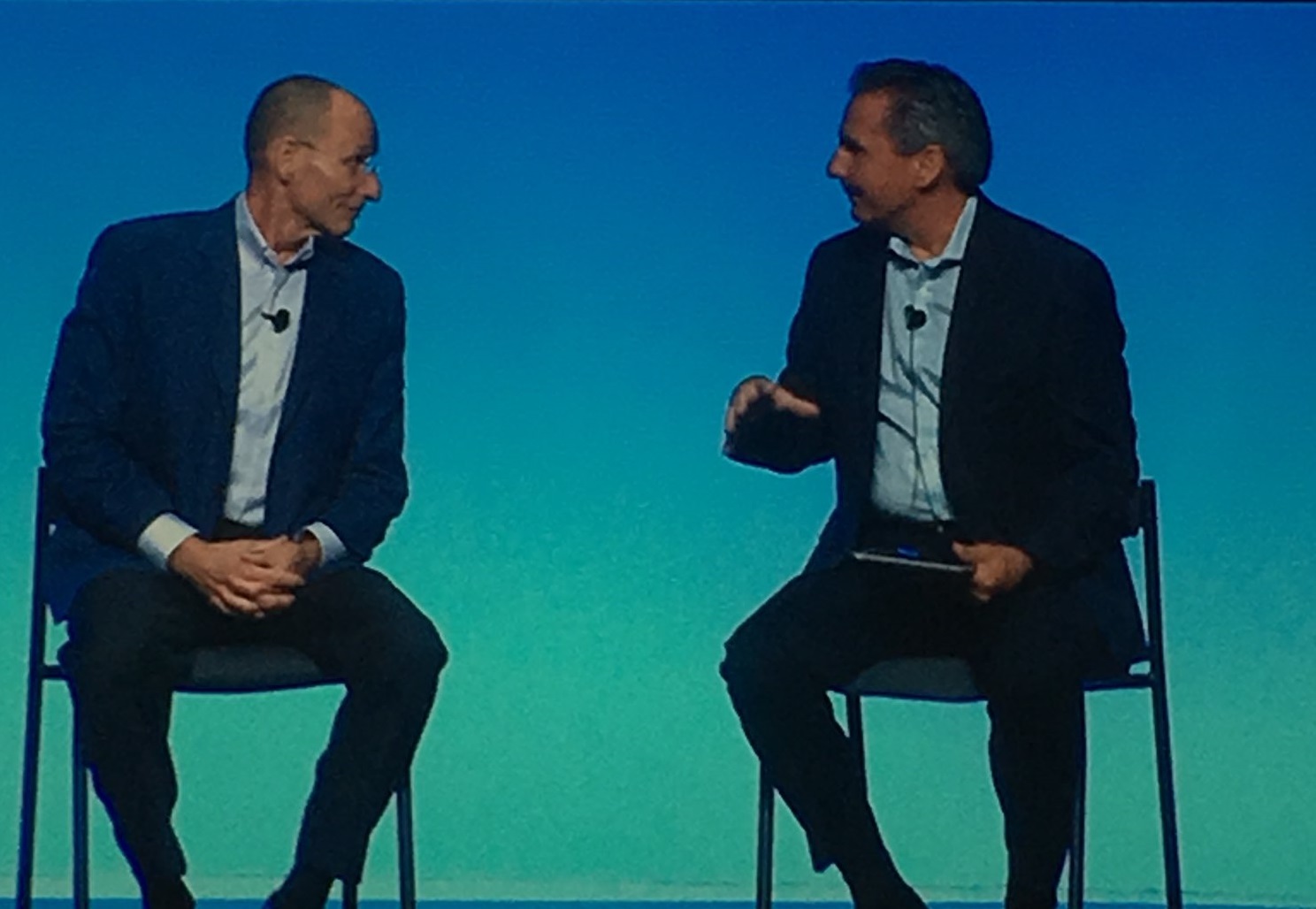CRE Tech in the Age of Acceleration
Now in its 20th year, Realcomm gathered real estate professionals in Las Vegas to trade strategies for navigating technological innovation. CBRE President & CEO Bob Sulentic delivered the keynote address, detailing challenges and opportunities in digital leadership.
By Sanyu Kyeyune

Bob Sulentic and Jim Young
As evinced by Realcomm’s central theme—navigating the age of acceleration—it is crucial for real estate professionals to keep pace with the technological advancements that are rapidly transforming the industry. Now in its 20th year, the conference brought together innovators in commercial and corporate real estate, technology, automation and innovation.
In the two decades since Realcomm’s inception, technology has made commercial real estate data more transparent, pushing the industry to become more collaborative, global and in turn, more complex. “In the 35 years that I’ve been in (real estate),” commented CBRE President & CEO Bob Sulentic during the conference’s keynote address, “The pace of digital innovation, and more importantly, the pace of adoption has never been so fast—and it’s never been so impactful.”
On the bright side, the industry has responded with greater caution, becoming less prone to repeating mistakes of previous cycles, such as overbuilding, held Sulentic. But, despite having made noteworthy progress, there is still a long road ahead.
Developing a digital strategy
The rapid pace of technological innovation has had a meaningful impact on commercial real estate, leading to an influx of digital talent and moving more companies to up their investment in new technologies. Acknowledging the need to evolve, CBRE began improving its digital capabilities around three years ago, described Sulentic, determining early on that the best strategy would be to embed technology into the company.
To that end, the company tapped Chandra Dhandapani to lead the creation and implementation of enterprise-level digital strategies as the firm’s chief digital and technology officer. Dhandapani drew on her finance background to identify and attract top talent, which has “changed our profile as a company,” said Sulentic. “We are a much more appealing company to young professionals than we’ve ever been before.” What’s more, Dhandapani has shepherded the firm’s expansion of data scientist teams and investment in information-driven procurement systems.
“Tech is no longer a buzzword in commercial real estate. It’s becoming a staple, foundational and embedded.” Still, there is a great deal of room to experiment, Sulentic conceded, pointing to trends that will likely impact the industry in the near future. The rate of advancement of artificial intelligence presents an opportunity to improve the execution of complex transactions, Sulentic offered. The space-as-a-service model, which not only addresses the physical layout of a commercial space but also the technology that supports it, represents another avenue for growth.
Improving outcomes
In response to the unique needs of its occupier clients, CBRE has amplified its predictive analytics capabilities to identify location opportunities, while also using data visualization to hone in on specific properties. Sulentic also described how the firm has leveraged augmented reality to explore building stacking and test fits for customers, resulting in improved property performance and a better experience for occupants.
Of the company’s innovation plan, Sulentic said, “We want to invest in technology that impacts outcomes we deliver to our clients, so our digital strategy needs to be commercial and embedded in our business. We’re in a position today where we can buy technology companies and integrate (them) smoothly into our business.”
Following the address, Realcomm Co-Founder & CEO Jim Young joined Sulentic on stage. The two industry leaders concurred that navigating the next three to five years will require collaboration, not just within organizational divisions but also with third-party service providers. “This is not a journey you want to do alone,” Young maintained. “There are a lot of risks, (and) one bad decision could put you in a place where you don’t want to be.”







You must be logged in to post a comment.